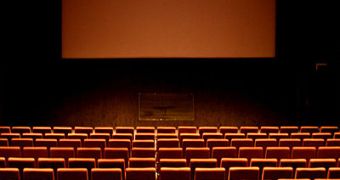According to officials working for various copyright protection institutions and organizations, more and more potential viewers are being deterred from the cinemas by the growing phenomenon of peer-to-peer sharing (P2P), which, in their minds, facilitates the distribution of copyrighted materials, and infringes the rights of the movie producers and distributors. And since they cannot harm or ban P2P engines altogether, they have moved to watermarking audio tracks, as a last resort.
The approach Japanese scientists have studied in determining the identity of individuals who illegally copy movies from the cinemas via a video camera has been surprising, to say the least. They advocate the use of an audio watermark of sorts, kind of like the one used on pictures. But, as it stands to reason, the mark will not be visual, but auditory, yet too faint for others to perceive. It will be a re-occurring signal that is bound to go undetected by the average human ear.
It will repeat itself once in a while, and Osaka University professor Noboru Babaguchi believes that this would be enough to apprehend the “perpetrator.” Basically, when the soundtrack of the movie is first created, the watermark will be mixed in with every one of the 5 channels used in modern productions. Then, when an illegal copy of a film hits the streets, all investigators would have to do is to work backwards from the camera microphone, analyzing the way the watermark is transmitted from each of the speakers to the camera.
Once they establish this correctly, they will basically have 5 lines of sounds, which will intersect in a single position. And that position will be exactly the chair on which the person copying the movie stood. However, this would pose a difficult challenge to cinemas worldwide, because, in order for the measure to work, managers would have to photograph each individual when they enter the movie hall. Moreover, that would most certainly raise privacy issues with the customers and could deter them from coming to that specific location ever again.

 14 DAY TRIAL //
14 DAY TRIAL //